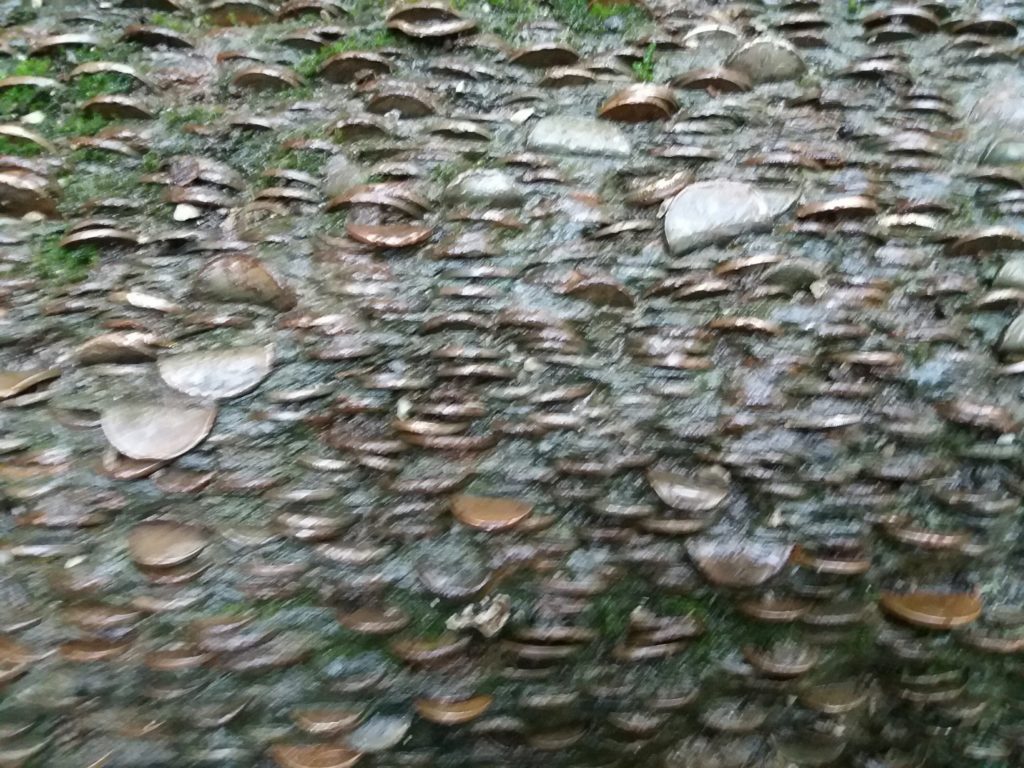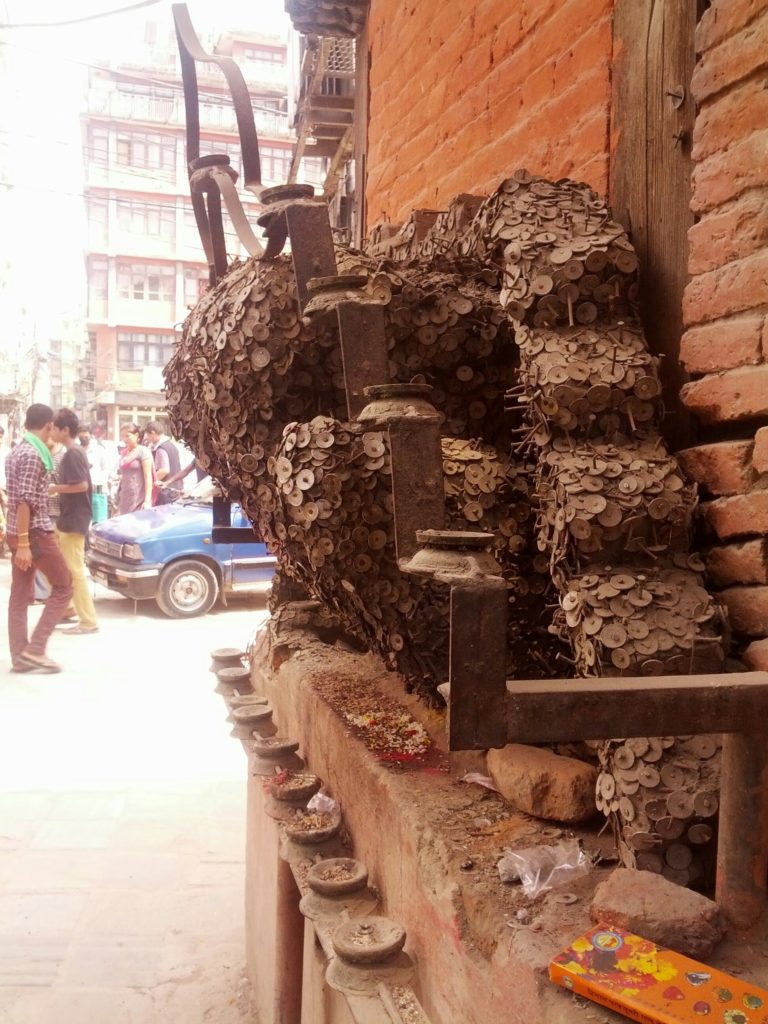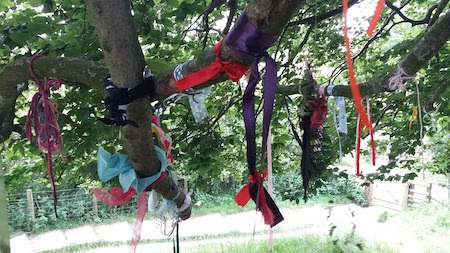The Centre for Folklore Myth Magic in Todmorden is putting on some excellent talks, and this weekend’s session on Coin Trees by Ceri Houlbrook was particularly good.
A coin tree is one that has had coins hammered into it. It usually happens with fallen trees, and while the tradition can be documented back to Victorian times, it seems to have taken off in the 21st century. Dr Houlbrook ascribes this to change in forestry practises since 2000, when fallen trees were moved off paths but otherwise left to rot in place.
The first coin tree I encountered was one in Malham, while walking the Pennine Way:

I also encountered something similar in Kathamandu, where a large block of wood has had nails hammered into it. This is said to ward off toothache, and the site is detailed in Atlas Obscura. It was interesting to hear that the earliest British coin trees were also used as a means of dealing with toothache.

Dr Houlbrook’s research has explored various forms of what she describes as “unofficial embellishments to landscapes”, particularly where this has become problematic, or is likely to. The earliest example she discussed with relation to coin trees was a site on Isle Maree, which began as a rag tree, before people took to nailing the rags to the trunk, before directly hammering in coins.
I attended the session with Will, one of the CERN pilgrims, so we were obviously considering coin trees in relation to money burning. At one point, the use of coins in wishing fountains and coin trees was described as ‘sacrifice’. There was also a mention of how coin trees produce sacred zones in secular areas – “turning a space into a place”. This can be seen in how queues develop at coin trees, with people taking their turn and approaching the act with a certain severance. We also learned about coin-folding to cure disease, which sounds like an interesting approach to currency destruction.

One of the most interesting aspects of traditions like coin trees is how people explain it. Dr Houlbrook interviewed a number of people who had placed coins in trees and many could not clearly explain what the tradition was and why they had done it – participation went before explanation. Dr Houbrook went on to talk about how she had begun considering folklore as improvised in response to children’s questions rather than the model of it being taught by the old to the young. It’s fascinating to see the growth in coin trees, and how the retrospective explanations of these things generate references to traditions that do not truly exist.
Earlier this year, Dr Houlbrook released a book ‘Ritual Litter’ Redressed which I’ve ordered from Amazon to learn more about this subject.
Interesting post, thanks